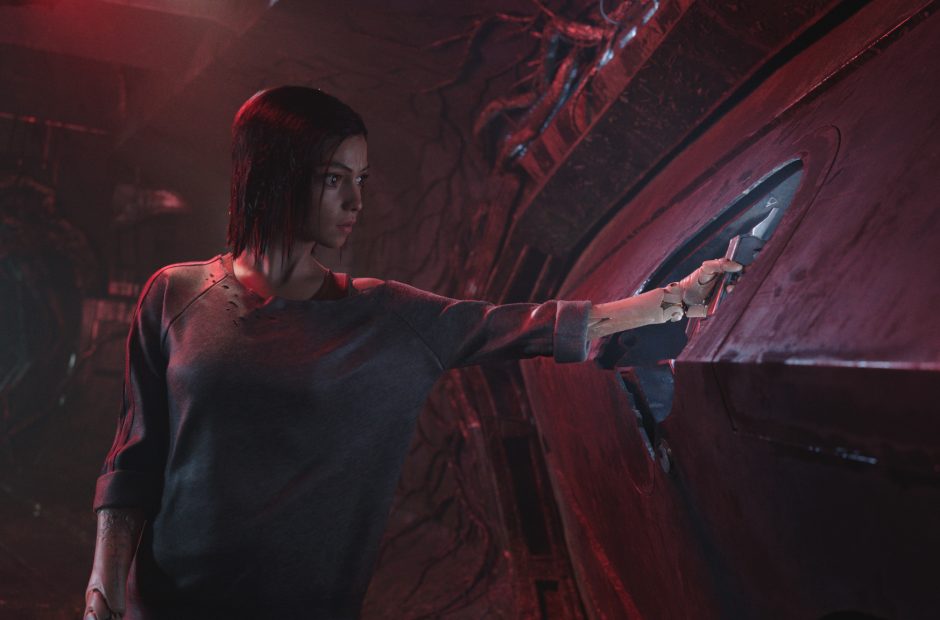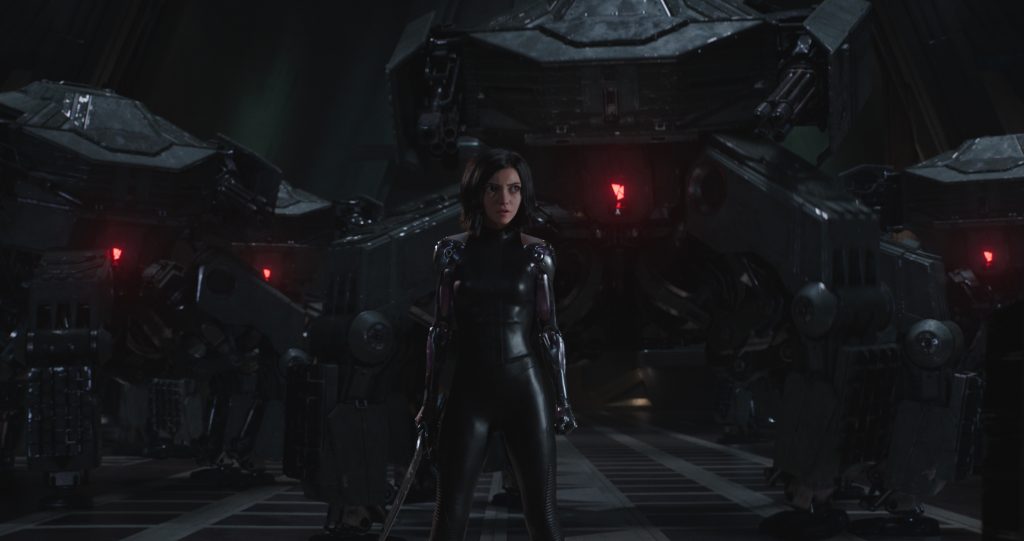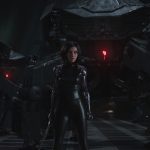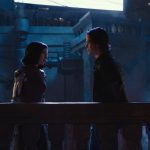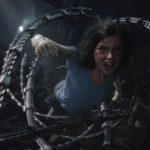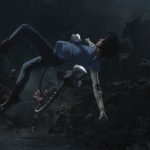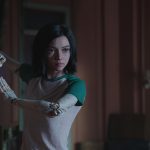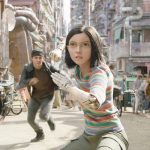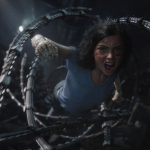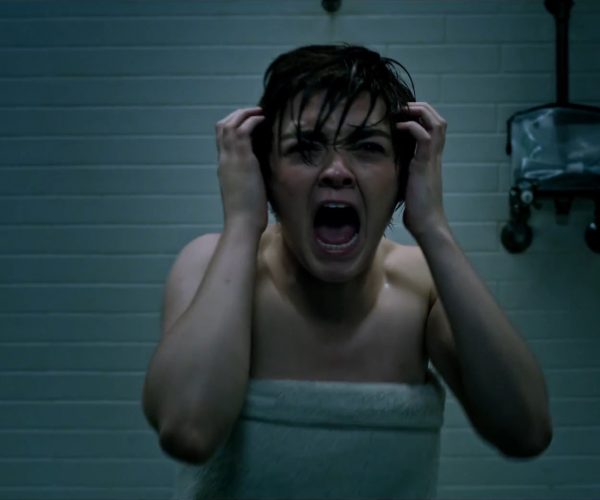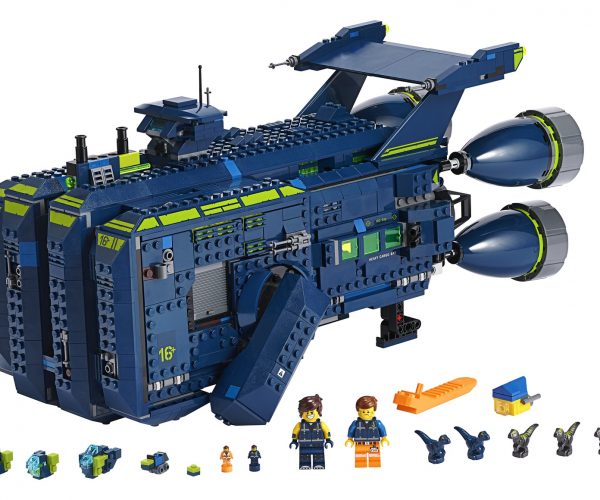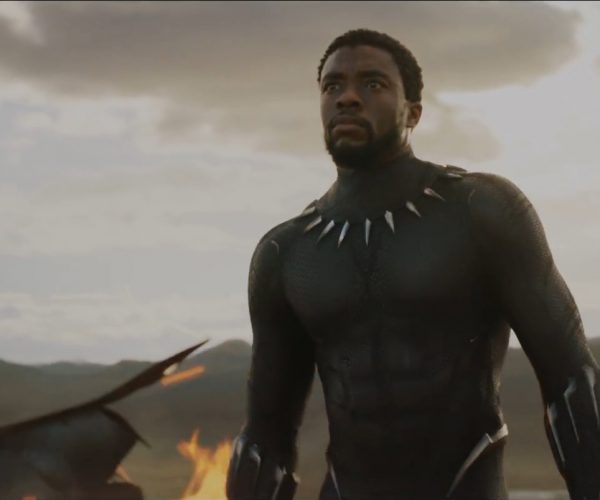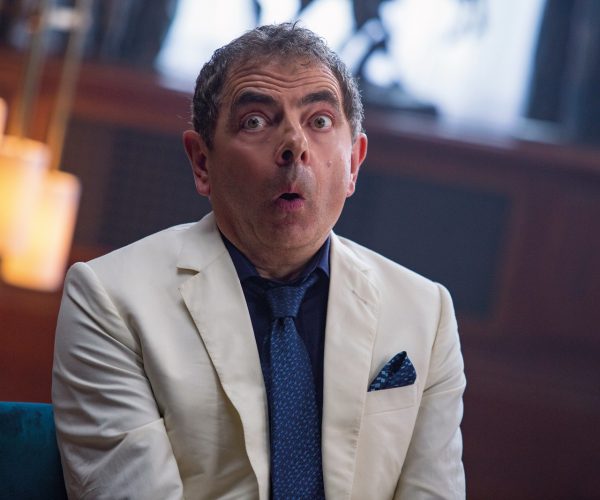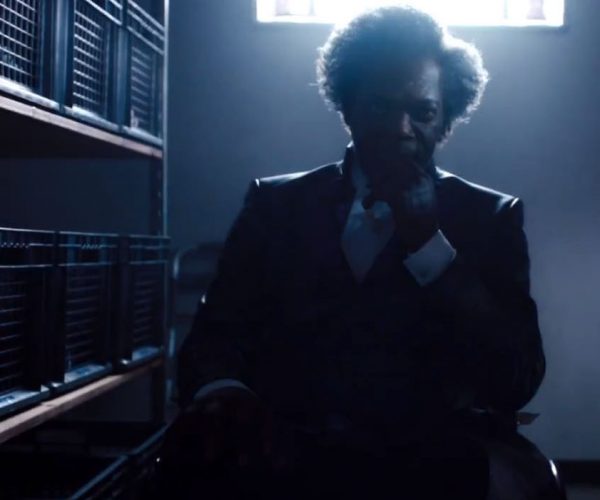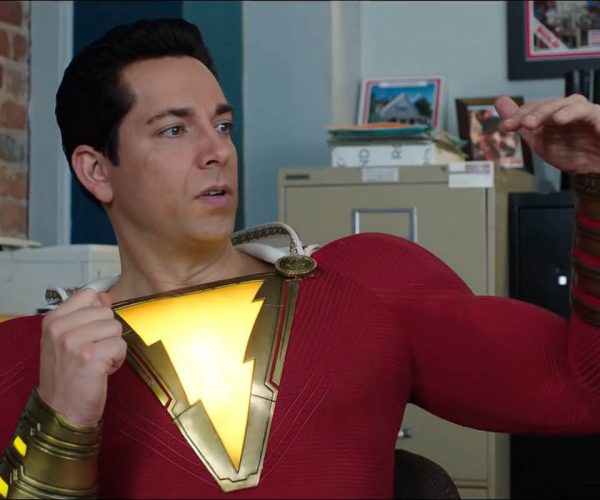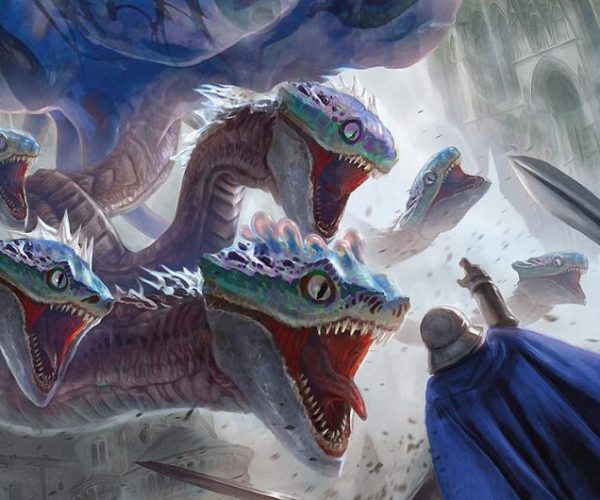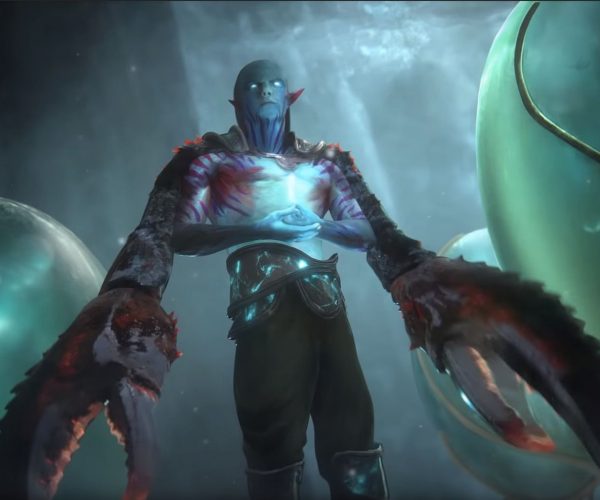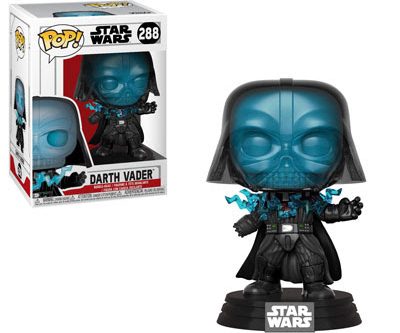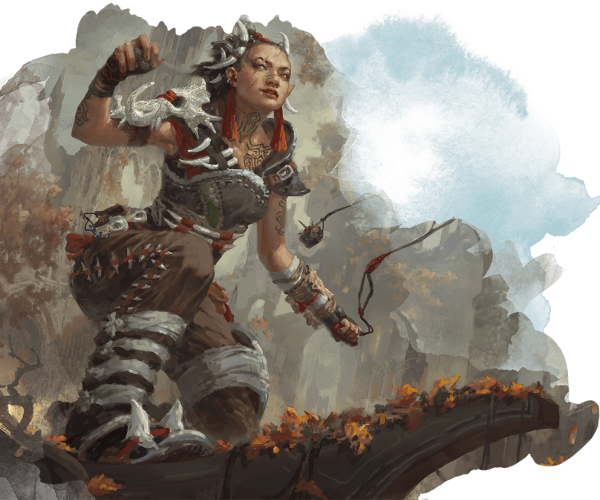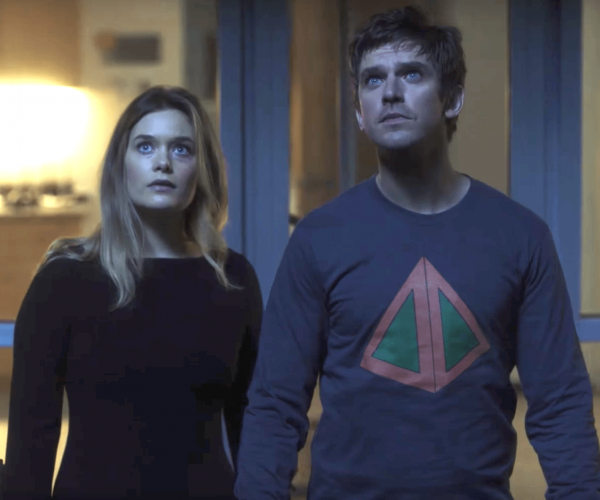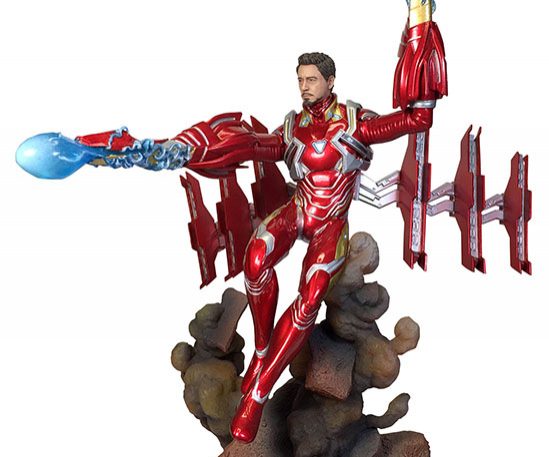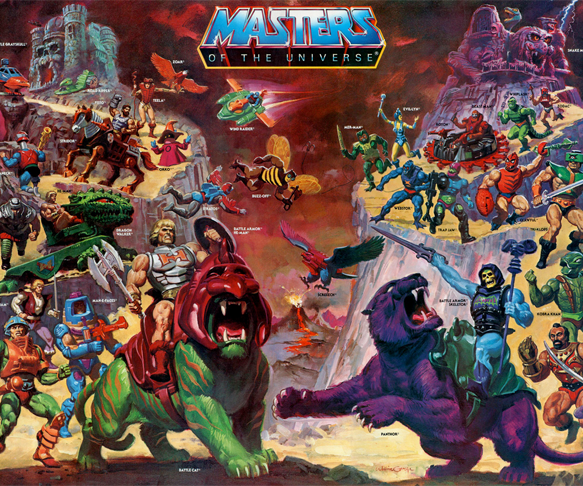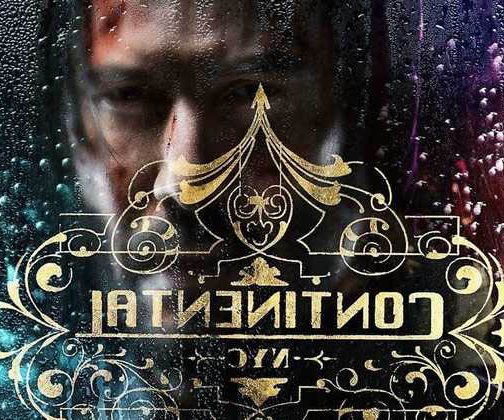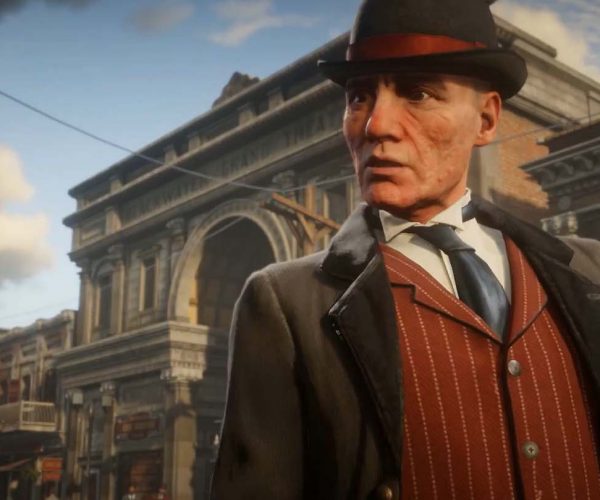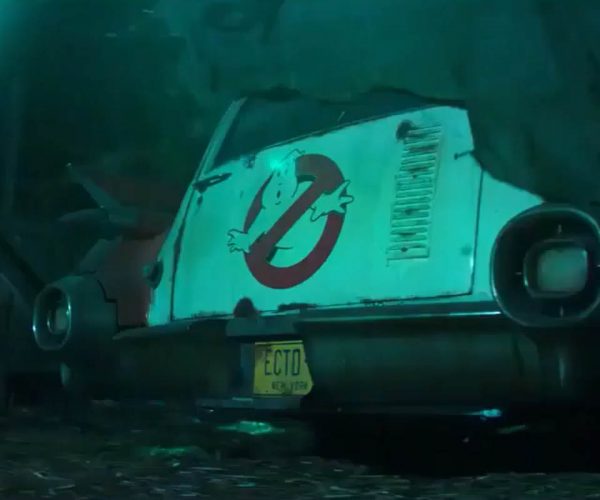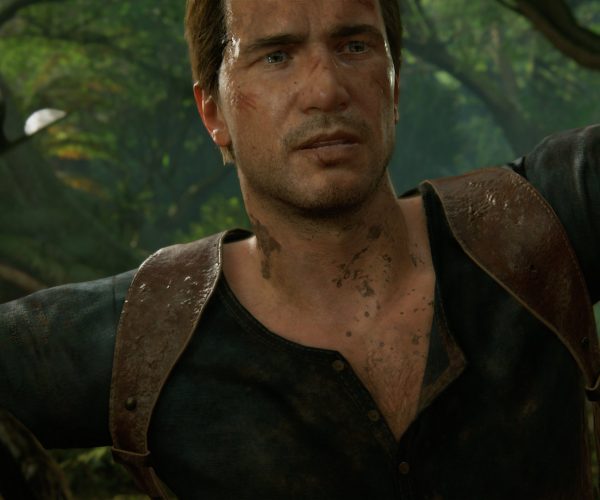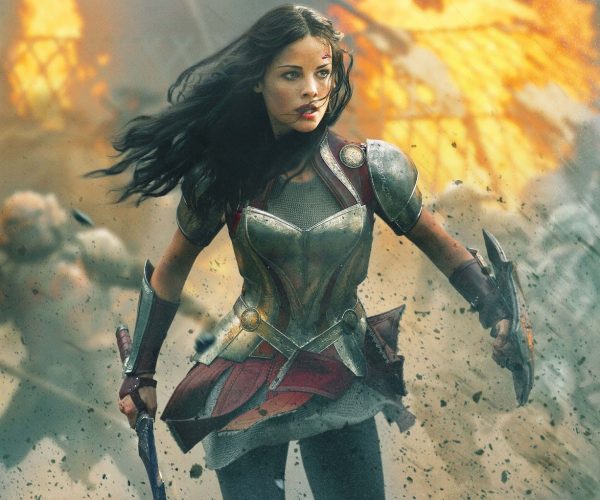After getting some eyes on time with Alita: Battle Angel earlier this month, I had the chance to sit down with two big names from behind the scenes. Producer Jon Landau (Titanic, Avatar) and Senior visual effects supervisor for Weta Digital, Joe Letteri. We only had about 10 minutes to talk, but it became quickly apparent that we could’ve gone on for hours if we’d had the chance. Our conversation wandered a little bit but centered primarily on Alita herself, with a lot of time spent on her eyes.
First, though, I was curious about the inspiration for this project. It’s pretty well known that producer James Cameron chased this movie for well over a decade before it actually got made.
“Jim had a daughter who was very close to Alita’s age when he first learned of the property – maybe a little bit younger – and he saw this as an empowerment story for her,” Landau said. “This young girl going through her life as we all do with these insecurities but showing that she could find within her the ability to be a hero and as a father it spoke to Jim as a story that he wanted to tell.”
It serves to reason, then, that getting Alita herself right would be an important part of making this movie work. When the initial round of trailers hit last year, the initial response from many of us watching at home was “what is up with her eyes?” It looked at the time like a slavish recreation of the anime art style as live action. All you have to do to know that some art is meant to stay two-dimensional is google “realistic Simpsons art” or “realistic Super Mario art.” I’m not linking because I don’t want to be responsible for your nightmares.
By the time Alita was playing out in front of me on the big screen, though, something had changed, and her eyes didn’t look weird anymore.
“Alita’s design was actually the biggest thing that we had to work up because she was drawn with these overly large eyes. And with this, you know, kind of small, heart-shaped mouth,” Letteri said. “As we turned her into a real character, we are constantly asking ourselves, why would they do that? Why do you have the society that’s, you know, building, you know, the cyborgs and cyborg parts?”
To do that, they started to build in backstories for many small elements – a sort of lore encyclopedia.
“We demonstrate that that’s a very functional purpose, you know, in the film, the way it’s done, why would they do this, because it has the potential to just sort of stand out as, as not fitting that world, right. So we always kept it within limits of what makes sense, like, we rationalize, the largest is, Oh, she has a fighter, and she has to fight at nighttime. So these make sense. So we didn’t make them big to be cartoony or to be a style element, we tried to make them, you know, have a sense of function behind them, that that keeps it grounded. And sure, you never know that in the story. But that’s the kind of thing that we use to limit ourselves to figure out where the best fit would be.”
This helped build an internal consistency that made some decisions feel almost automatic. They moved the story’s setting from Kansas to a more South or Central American setting to make the whole space-elevator thing make sense, but no one ever says that in the movie.
“It makes it easier when you’re going through trying to tell the story and looking at each shot and trying to figure out what exactly should the character be doing in that scene,” Letteri said.
“The other thing is that the design process is iterative,” Landau added. “You don’t sit there and lock into a design. You might think you have the perfect design for the close-up, but when she turns into profile, she has to look good. Okay – we gotta modify the design to work in the profile. Now bring it back to the head-on shot. Now that doesn’t work, bring it back.”
“I don’t think we really locked into Alita’s design until maybe 18 months into post-production, right after we had seen her come to life in all of these different shots.”
I wondered to Jon and Joe how much fan sentiment shaped that process.
“I’m going to surprise you with what I’m going to tell you. People said, the eyes are too big in the trailer, that reaction came from certain people. James Cameron’s response – just to the character, forget the trailer – as he looked at shots around the same period was that her eyes have to be bigger. Not the eye socket, but the irises, the pupil. So the eyes didn’t get smaller, the irises and pupil got bigger. It gave us this symmetry where we lost the [white of her eyes].”
You know that saying about the eyes being the windows to the soul? Well, Alita’s got bay windows.
From Letteri’s side, over at Weta Digital, the mandate for big eyes caused its own issues.
“When you have overly large eyes, the biggest problem is actually having enough real estate around the eyes to register the emotion because there’s a lot of subtle motion that happens that you see – around the eyelids and around the skin – that you leave yourself less room to do, especially with a character who’s young. There’s not a lot of detail there to begin with,” Letteri said. “So you still have to make sure that you’ve got all the detail in the right place then of course there’s the detail in the eyes themselves. Her eyes were incredibly detailed because they were so large, and because we had so many close ups in there, we just modeled all the fibers in the eyes. Her eyes had more geometric detail in them that we would have had on all Gollum in Lord of the Rings. His whole body. It’s just something that we’re able to do now just given what we’ve learned and with the compute power that we have available to us it becomes a question of you have to do it to get the character to really work.”
The way Alita was filmed did as much to help the process along as it did to complicate it, though, simultaneously making it harder to get right and easier to see what’s wrong.
“They were not doing this movie in a void,” Landau said. “Rosa wasn’t performing on a green screen, she was performing on a set. If she’s standing there next to Christoph Waltz and he’s being lit, you know what you have to photographically match to. They always have that standard right next to her to live up to.”
The course Alita has taken over the years is strange to think about. It started as a movie Cameron wanted to make for his daughter – a purely emotional reasoning behind it. And all the technical work came down to the emotional response to the character. A movie is a million moving parts, just like Alita’s cybernetic body, and getting them all moving right is kind of a miracle on its own.
